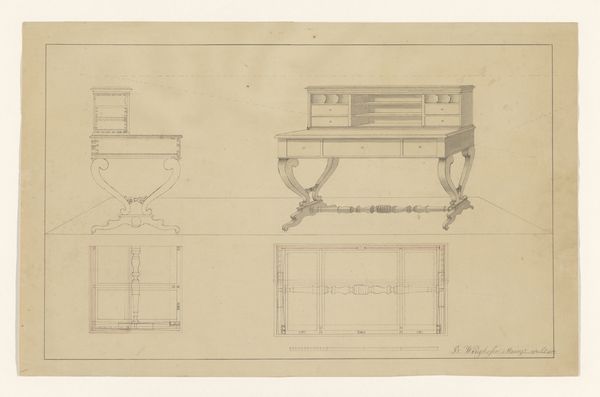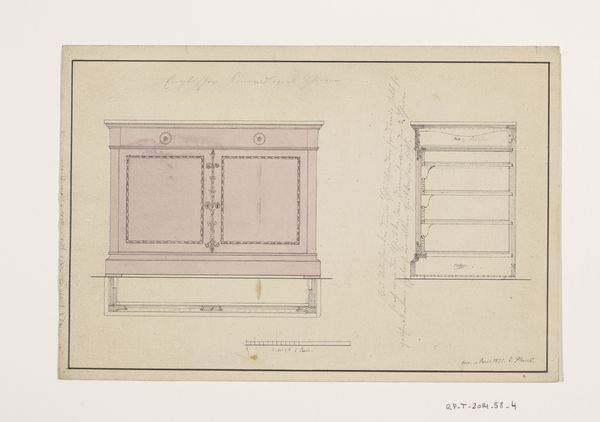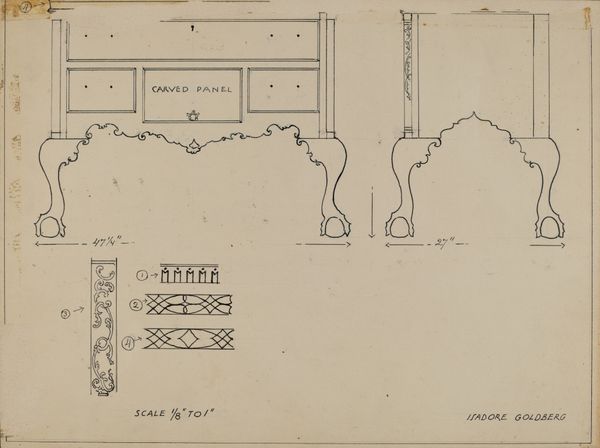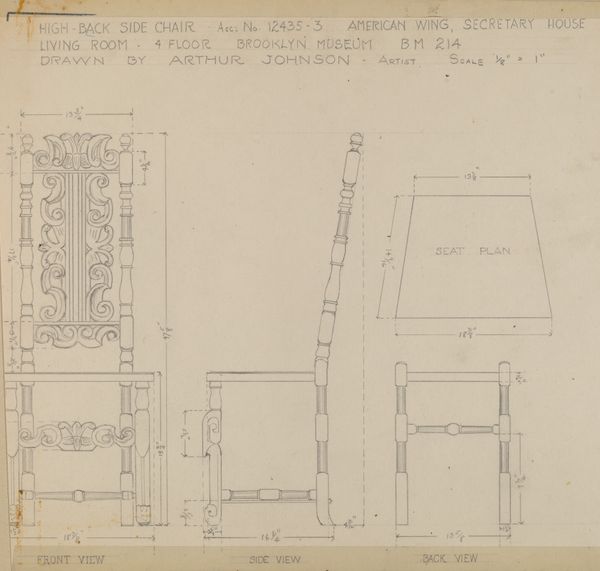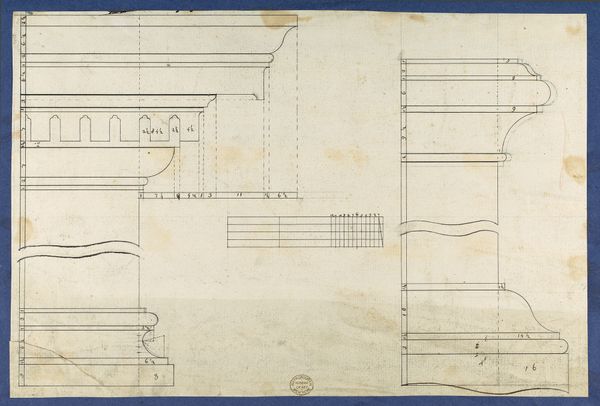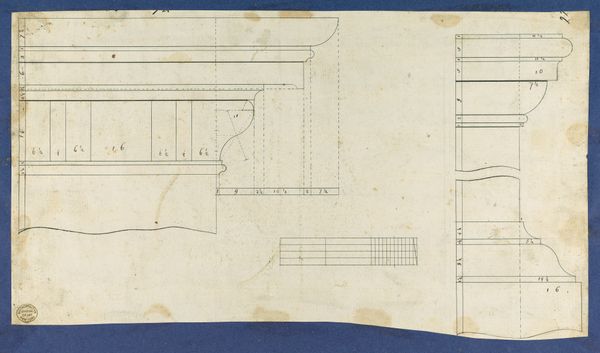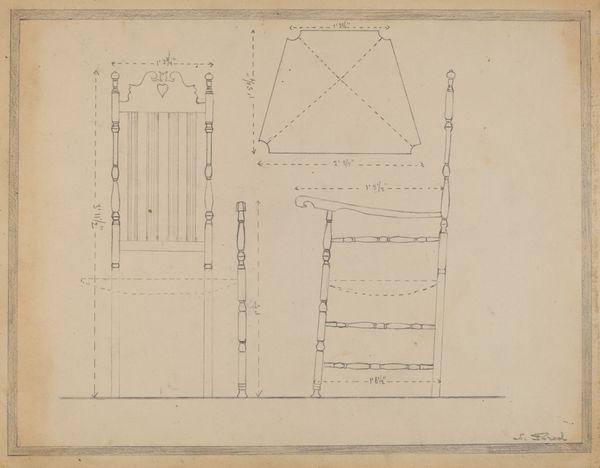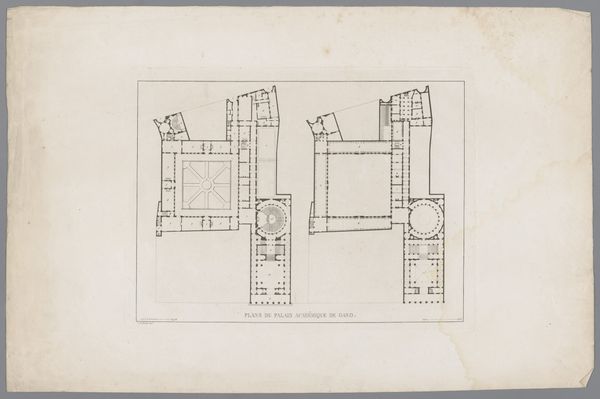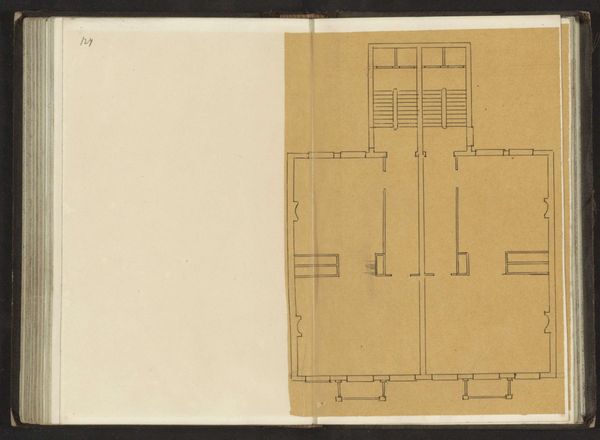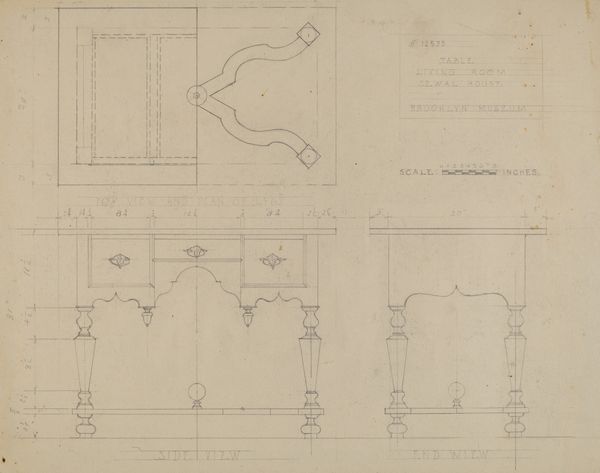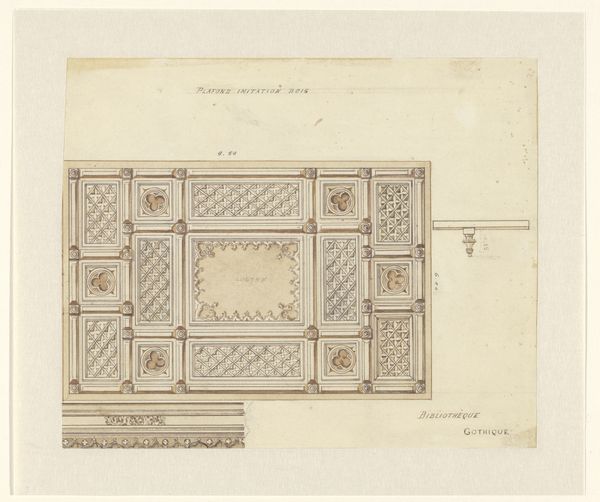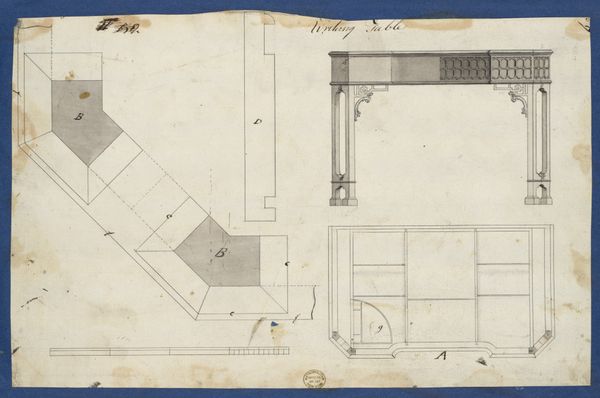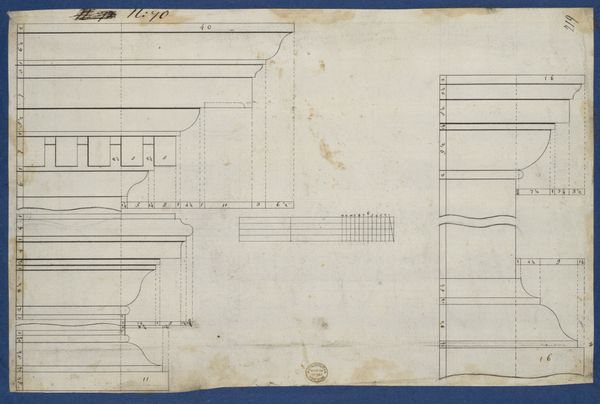
Ontwerp voor een commode met een secretaire-lade, met zijaanzicht en plattegronden onder beide aanzichten, en rechts daarvan een scharnier 1851
0:00
0:00
drawing, paper, pen
#
drawing
#
paper
#
geometric
#
pen
#
realism
Dimensions: height 273 mm, width 442 mm
Copyright: Rijks Museum: Open Domain
B. Winghofer produced this design for a commode with a secretary-drawer in 1826, rendering it in pen and brush with grey ink and watercolour. Winghofer's design, with its emphasis on symmetry, classical motifs, and the opulence suggested by the faux-marble finish, reflects the Neoclassical style popular across Europe in the late 18th and early 19th centuries. This style, favoured by elites, signalled a desire for order and stability in the wake of revolutionary upheaval. The commode itself, as a piece of furniture designed to store personal belongings, speaks to the rise of a culture of privacy and domestic comfort among the middle classes. The meticulous detail of the drawing – including the side view, plan view, and hinge mechanism – suggests its use within a workshop or for presentation to a client. The inclusion of a secretary-drawer points to the growing importance of literacy and administrative tasks in everyday life. To understand Winghofer's design fully, we might consult pattern books, trade catalogues, and archival records of furniture makers and their clients. These sources can illuminate the social and economic context in which such designs were produced and consumed.
Comments
No comments
Be the first to comment and join the conversation on the ultimate creative platform.
